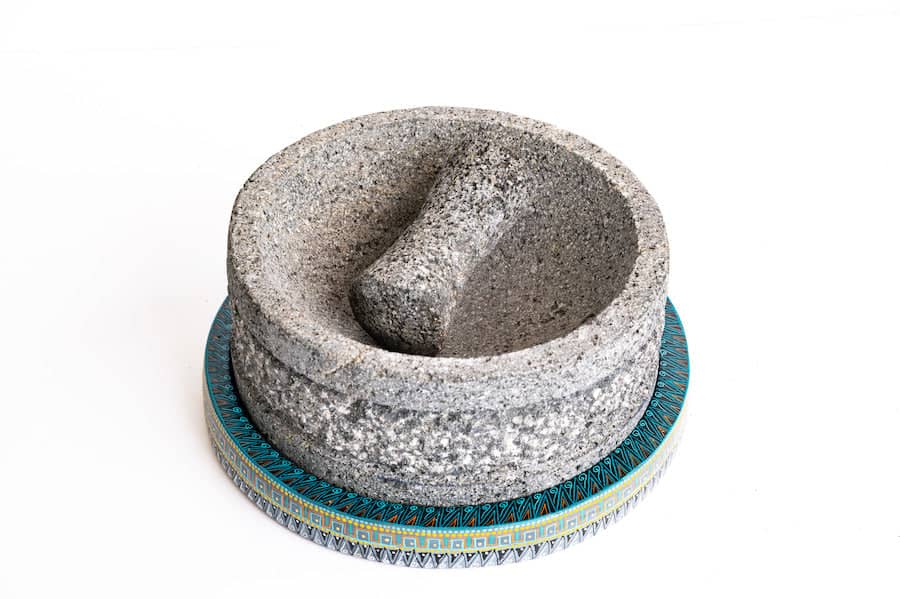

The Alebrije Art Story
The birthplace of alebrijes can be traced back to the vibrant city of Mexico City, within a workshop nestled in the enchanting neighborhood of La Merced in 1936. It was here that Pedro Linares, a skilled artisan known for his craftsmanship in creating piñatas, carnival masks, and papier-mâché Judas figures, brought forth the first alebrijes. Not only did Linares craft these magnificent creatures, but he also coined the term "alebrijes" itself.
Initially, Pedro Linares showcased his artistic creations in local markets, such as the bustling Mercado de La Merced. However, destiny had something extraordinary in store for him. One fateful day, the owner of an art gallery in Cuernavaca stumbled upon Linares' work, and in an instant, the mesmerizing pieces caught the attention of renowned artists Diego Rivera and Frida Kahlo. Impressed by Linares' talent, Rivera and Kahlo became avid patrons, commissioning the creation of more alebrijes, breathing life into this unique tradition.
The alebrije phenomenon truly gained momentum when filmmaker Judith Bronowski documented Pedro Linares' inspiring journey in a seminal documentary released in 1975. This film shed light on Linares' extraordinary artistry and ignited a newfound appreciation for alebrijes, expanding their popularity among artists and enthusiasts alike. In 1990, two years prior to his passing, Pedro Linares López was honored with the prestigious National Prize for Arts and Popular Traditions, a recognition that served as a well-deserved tribute to his immense contributions. This recognition, in turn, inspired other artists already immersed in the alebrije tradition to further explore and expand its artistic boundaries.
Diego Rivera himself professed that nobody but Linares possessed the extraordinary ability to materialize the visionary figures he envisioned. Today, these exceptional works of art, meticulously crafted by Linares for Rivera, can be found on display at the Anahuacalli Museum in Mexico City, serving as a testament to their profound artistic collaboration and the lasting legacy of alebrijes.
The enchanting world of alebrijes continues to thrive, captivating hearts with its vivid colors, intricate designs, and whimsical creatures. Each meticulously handcrafted piece tells a unique story, weaving together the creative spirit of Mexico's cultural heritage and the visionary imagination of its artisans.
In the region of Oaxaca, another variant of alebrijes has gained popularity, carved from the sacred wood of copal. The creation of these wooden masterpieces forms the foundation of the local economy in the towns of San Martín Tilcajete and San Antonio Arrazola, where numerous families engage in the art of carving figures, which are then intricately painted with vinyl paint and sold in local squares, markets, and workshops.
The Oaxacan alebrije is a harmonious fusion of the traditional wood carving techniques of the region and the innovative approach pioneered by Pedro Linares. The introduction of this craft into Oaxaca took place in the 1980s through a demonstration workshop held in the United States. Organized by Judith Bronowski, the workshop featured the participation of Manuel Jiménez Ramírez and textile artisan María Sabina, both native to Oaxaca. Manuel Jiménez Ramírez, a talented artist from San Antonio Arrazola, perfected the adaptation of the alebrije to the technique of carving copal wood, which was the preferred method among local artisans.
Following Jiménez's adaptation, the alebrije craft flourished in San Antonio Arrazola, San Martín Tilcajete, and La Unión Tejalapan. While the production of alebrijes brought economic growth to the region, it also led to environmental concerns, such as deforestation of copal trees. Efforts to address the issue of deforestation have been made through reforestation programs, although their success has been somewhat limited.
In addition to Oaxaca, several museums and galleries showcase alebrijes as part of their permanent collections. The Museum of Popular Art in Mexico City is home to traditional alebrijes, while the Marakame Art Gallery in Morelia, Michoacán, features predominantly high-end alebrijes.
At Cemcui, we celebrate the diversity and beauty of alebrijes by offering a curated selection that showcases the captivating artistry from both Mexico City and Oaxaca. Explore our collection to discover the unique expressions of this cherished craft, created by skilled artisans who honor the traditions while infusing their own creative vision.
Join us in preserving and appreciating the rich heritage of alebrijes, and embark on a journey that encompasses the artistic traditions of both regions.
At CEMCUI you can find these types of products under the Alebrije section... Get to know them!

We combine this craft with other mexican products such as Molcajetes and Tortilleros!
We take immense pride in showcasing the talent and dedication of our artisans, who pour their heart and soul into every piece they create. By owning one of our Artesanal Molcajetes and tortilleros with Alebrije Design, you not only bring a piece of Mexican artistry into your home but also support the preservation of traditional craftsmanship.
-
Pre-Order Item: Yolia 8 Inch Molcajete with Alebrije hand made painted base - Special Edition
CEMCUIOriginal price $229.00 - Original price $229.00Original price$229.00$229.00 - $229.00Current price $229.00In stockIMPORTANT: INCLUDES PESTLE, MORTAR AND ALEBRIJE BASE Please note that due to the artisanal nature of our process it is made by order. There is an e...
View full detailsOriginal price $229.00 - Original price $229.00Original price$229.00$229.00 - $229.00Current price $229.00 -
Unique Piece - Yolia 8 Inch Molcajete with Blue Alebrije hand made painted base - Special Edition
CEMCUIOriginal price $169.00 - Original price $169.00Original price$169.00$169.00 - $169.00Current price $169.00Low stockIMPORTANT: INCLUDES PESTLE, MORTAR AND ALEBRIJE BASE Collectors Item. Get to know our Alebrije Collection, this beautifull piece is made by order, ...
View full detailsOriginal price $169.00 - Original price $169.00Original price$169.00$169.00 - $169.00Current price $169.00 -
Craft by Order - Yolia 8 Inch Molcajete with Alebrije hand made painted base - Special Edition
CEMCUIOriginal price $229.00Original price $229.00 - Original price $229.00Original price $229.00Current price $199.00$199.00 - $199.00Current price $199.00In stockIMPORTANT: INCLUDES PESTLE, MORTAR AND ALEBRIJE BASE Please note that due to the artisanal nature of our process it is made by order.There is an es...
View full detailsOriginal price $229.00Original price $229.00 - Original price $229.00Original price $229.00Current price $199.00$199.00 - $199.00Current price $199.00Sale -
Craft by Order - Yolia 8 Inch Molcajete with Orange Alebrije hand made painted base - Special Edition
CEMCUIOriginal price $229.00 - Original price $229.00Original price$229.00$229.00 - $229.00Current price $229.00Low stockIMPORTANT: INCLUDES PESTLE, MORTAR AND ALEBRIJE BASE Please note that due to the artisanal nature of our process it is made by order.There is an es...
View full detailsOriginal price $229.00 - Original price $229.00Original price$229.00$229.00 - $229.00Current price $229.00 -
Craft by Order - Chilmamolli 8 Inch Molcajete with Green Alebrije hand made painted base - Special Edition
CEMCUIOriginal price $240.00 - Original price $240.00Original price$240.00$240.00 - $240.00Current price $240.00Low stockIMPORTANT: INCLUDES PESTLE, MORTAR AND ALEBRIJE BASE Please note that due to the artisanal nature of our process it is made by order.There is an es...
View full detailsOriginal price $240.00 - Original price $240.00Original price$240.00$240.00 - $240.00Current price $240.00



















Leave a comment